What are Intervals in Music?
Musical intervals are part of the language of music. Understanding intervals helps musicians read, speak, hear, and understand the language of music better.
What is an Interval in Music?
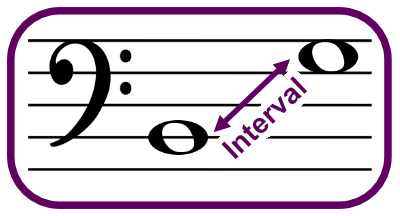
A music interval is the distance between two notes (or pitches).
When you see two notes on a music staff, sing two pitches, or play two pitches on an instrument, the interval is how far apart they are from each other.
Why are Music Intervals Important?
All musicians should learn to recognize music intervals by sight and by sound. Here's why:
Recognizing music intervals by sight helps you read music more fluently. When you can recognize intervals on the staff, reading music becomes faster and easier. With practice, this skill can help you learn to "hear" sheet music in your head without playing it aloud -- just like reading a book silently to yourself.
Recognizing music intervals by sound helps you understand the music you listen to. If you can recognize intervals by listening, the language of music becomes more familiar to you (just like learning a new spoken language). It also helps you learn to play or sing music by ear, because you can tell precisely how far apart all the pitches should be.
What Do We Call Music Intervals?
To name an Interval, we give it both a Number and a Quality (examples: Perfect 4th, Major 6th, Minor 2nd, etc.). The number represents the distance between the notes, and the quality represents its sound, feeling, and harmonic use.
The number of an interval must be determined first, and then the quality. Together, these two elements give a music interval its name.
Interval Numbers: How to Count Intervals in Music
Like any other distance, intervals are measured in numbers. But instead of counting kilometers or inches, we count diatonic musical notes: the seven natural pitches of the musical alphabet, A - B - C - D - E - F - G. The interval number is the number of letter names (or music staff positions) that it encompasses.
For example: Here is C and E on the Bass staff.

This interval is a 3rd because it spans 3 letters: to get from C to E, count "C, D, E" (1, 2, 3).
This interval is also a 3rd because it spans 3 staff positions: to get from the bottom note to the top note, count "space, line, space" (1, 2, 3).
How to Count Intervals on the Piano
Interval numbers can also be counted on the white keys of the piano, because the white keys represent both the letter names AND music staff positions.
For example: Here is a C and E on the piano. This interval is a 3rd because it spans 3 white keys.
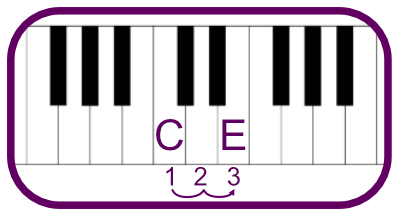
Here are the three ways to determine the number of an interval:
Intervals on the Music Staff
Count the space (or line) where each given note is. Count any lines and spaces between them. Then add these numbers together.
This is the
interval number.
Example:
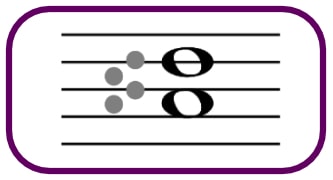
Bottom Note = 1
(Line between = 2)
(Space between = 3)
Top Note = 4
This interval is a 4th.
Intervals as Note Names
Count the two given letter names. Count the number of letters between them. Then add these numbers together.
This is the
interval number.
Example:

C = 1
(Letter D between = 2)
(Letter E between = 3)
F = 4
This interval is a 4th.
Intervals on the Piano White Keys
Count the two given white keys. Count the number of white keys between them. Then add these numbers together.
This is the
interval number.
Example:
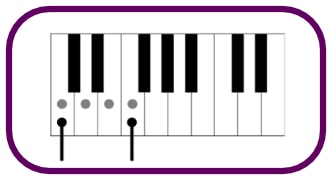
C key = 1
(D key between = 2)
(E key between = 3)
F key = 4
This interval is a 4th.
The larger the number, the farther apart the pitches are. For example, a 7th is bigger than a 2nd, which means the pitches in a 7th interval look and sound farther apart than the pitches in a 2nd interval.
How to Get Better at Identifying Interval Counts
1. Practice counting intervals with letter names. Choose various letter combinations from the music alphabet and practice counting how many letters apart they are. Remember the alphabet is A-B-C-D-E-F-G, repeated over and over. Examples (assume the first letter is the lower note): A to B is a 2nd. F to C is a 5th. With time you will discover you do not need to really count the letters anymore because you will learn to automatically associate various letter combinations with their interval count.
2. Practice counting intervals on the music staff. Pull out some sheet music, choose any pair of notes that are either on top of each other (Harmonic Intervals) or next to each other (Melodic Intervals), and figure out their interval by counting the staff lines and spaces from the first note to the next. Do this over and over. With time you will notice visual clues and learn to recognize each interval by sight instantly, and you will no longer have to count staff positions. This will help you become a much better music reader.
3. If you're a pianist, practice counting intervals on the white keys. This is also beneficial for singers or other instrumentalists who refer to the piano from time to time, because the piano keys show a consistent visual reference for the distance between notes. Pianists should also practice playing the different intervals on the piano to learn how each interval feels in your hand. Being able to "feel" each interval in the hands by muscle memory (not having to count keys) makes a HUGE difference in a pianist's playing fluency.
Great resources to help you practice counting intervals all 3 ways:
Practice counting music intervals with printable music interval number worksheets in my Introduction to Intervals Packet. These worksheets will help you get better at counting simple intervals (2nds, 3rds, 4ths, 5ths, 6ths, 7ths, and octaves) as letter names, on the music staff, and on the piano white keys.
Includes 8 worksheets, Instruction Pages, Answer Keys, and At A Glance pages (helpful clues to identify each on-staff interval instantly!).
For even more practice, get over 100 printable musical interval worksheet pages in my full Intervals: Introduction Collection! The Collection includes all 9 Interval Introduction Packets: Introduction to Intervals, Harmonic and Melodic Intervals, and Intro to 2nds, 3rds, 4ths, 5ths, 6ths, 7ths, and Octaves (8ths).
Includes Instruction Pages, Answer Keys, and At A Glance pages (helpful clues to identify each on-staff interval instantly!).
* TEACHER BONUS: Both of these products come with a Studio License to reduce costs for Music Teachers. If you are a Classroom Music Teacher, Piano Teacher, or other Music Instructor, you may share these pages with any number of your own students through the coming years.
What are Interval Qualities in Music?
Once you know the number of a music interval, you can determine its quality. Interval qualities tell more about the sound of an interval, how consonant or dissonant it is, and how it could be used harmonically.
What Do "Dissonance" and "Consonance" Mean?
Dissonance and consonance are terms that have been used for centuries to describe the quality of music intervals. Their definitions have shifted over time and are subject to interpretation (especially across cultures and genres). Generally speaking, consonant intervals have a sense of stability, resolution, pleasantness, and agreeability, while dissonant intervals have a sense of instability, lack of resolution, tension, and disagreeability. The two words are also mutually exclusive: if an interval more consonant it is less dissonant (and vice versa).
All interval qualities have some level of dissonance or consonance. Both consonant and dissonant intervals are used to create music, and how they are used affects the mood and how the line of music resolves. An Augmented 2nd and a Minor 3rd may sound the same if no context is given, but a composer will selectively choose to write the interval as one or the other based on musical context as well as their intended mood and desire for the performer's interpretation.
How to Determine Interval Qualities
Every music interval is one of these 5 Interval Qualities: Perfect, Major, Minor, Augmented, or Diminished (more info on each of these below).
The quality of an interval is determined by the number of semitones (also called "half steps") that it encompasses, in conjunction with the interval number. BOTH the interval count and number of semitones must be considered together for two reasons:
- 1Two intervals may have the same Interval count, but a different number of semitones. They will have a similar appearance, but a different sound and a different quality.
- 2Two intervals may have a different Interval count, but the same number of semitones. They will have a similar sound, but a different appearance and a different quality.
Here are some examples of why we have to consider both interval count and semitones when determining an interval's quality.
Reason 1: Two intervals with the same Interval count and a different number of semitones look similar on the music staff, but they have different qualities, harmonic uses, and names.
Examples:
Minor 3rd vs. Major 3rd
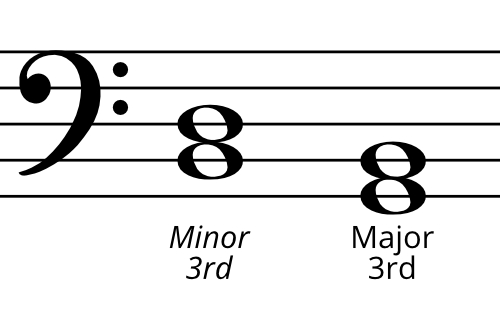
Both are 3rds. Both span 3 staff positions and 3 letters. Both are line notes with no sharps or flats. Both appear toward the bottom of the bass staff.
These intervals look similar and have the same interval number, but they are different qualities:
B to D is a Minor 3rd because it spans 3 semitones: From B to C is 1, C to C-sharp is 2, and C-sharp to D is 3.
G to B is a Major 3rd because it spans 4 semitones: From G to G-sharp is 1, G-sharp to A is 2, A to A-sharp is 3, and A-sharp to B is 4.
Major 3rd vs. Minor 3rd
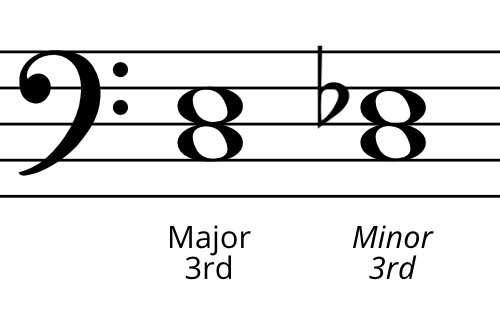
Both are 3rds. Both span 3 staff positions and 3 letters. Both are space notes. They even have the same letter names and are on the same exact staff spaces.
These intervals look similar and have the same interval number, but they are different qualities:
C to E is a Major 3rd because it spans 4 semitones: From C to C-sharp is 1, C-sharp to D is 2, D to D-sharp is 3, and D-sharp to E is 4.
C to E-flat is a Minor 3rd because it spans 3 semitones: From C to C-sharp is 1, C-sharp to D is 2, and D to E-flat is 3.
Reason 2: Two intervals with a different Interval count and the same number of semitones sound similar, but they look different on the music staff and have different qualities, harmonic uses, and names.
Examples:
Augmented 2nd vs. Minor 3rd
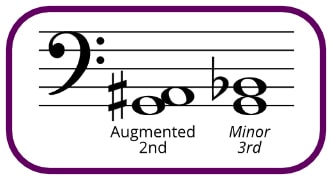
Both have 3 semitones, and they sound similar when played on a piano.
These intervals sound similar and have the same number of semitones, but they have different interval counts and qualities:
G to A-sharp is an Augmented 2nd because it encompasses 2 staff positions and 2 letter names.
G to B-flat is a Minor 3rd because it encompasses 3 staff positions and 3 letter names.
Augmented 3rd vs. Perfect 4th
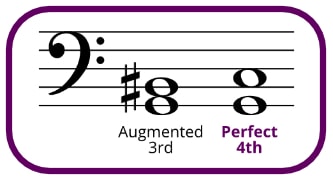
Both have 3 semitones, and they sound similar when played on a piano.
These intervals sound similar and have the same number of semitones, but they have different interval counts and qualities:
G to B-sharp is an Augmented 3rd because it encompasses 3 staff positions and 3 letter names.
G to C is a Perfect 4th because it encompasses 4 staff positions and 4 letter names.
How Do You Identify Interval Qualities?
You can determine an interval's quality by referring to the Major scale (the most commonly used scale in Western music and much of the world). Every note in the Major scale is either a Major interval or Perfect interval above the first note of the scale.

If the interval matches that of the 1st, 4th, 5th, or 8th (octave) note in a Major scale, its quality is Perfect. If it matches the 2nd, 3rd, 6th, or 7th note in a Major scale, its quality is Major.
If the interval isn't Perfect OR Major, the Major scale can still help you determine its quality. Identify which Major scale interval most closely resembles the interval you want to qualify, and then count the semitones. If the Interval resembles a Perfect or Major interval but is one semitone larger, it's Augmented. If it resembles a Major interval but is one semitone smaller, it's Minor. If it resembles a Perfect interval but is one semitone smaller, it's Diminished. And if it looks like it might be Minor but is one semitone even smaller, it is Diminished.
Quick Reference Guide for Identifying Music Interval Qualities:
To learn more about each of the 5 Interval Qualities, click each Tab below.
-
Perfect Intervals
-
Major Intervals
-
MINor Intervals
-
AUGMENTED Intervals
Perfect Intervals
Perfect intervals are the 1st (unison), 4th, 5th, and 8th (octave) notes (intervals above the tonic) in the Major scale.
Perfect intervals are also the 1st (unison), 4th, 5th, and 8th (octave) notes (intervals above the tonic) in the Natural Minor scale.
Perfect intervals include Perfect Unison (same pitch), Perfect 4th, Perfect 5th, and Perfect 8th/Perfect Octave (8ve).
Perfect intervals in the key of C:

Perfect intervals in the key of E:
Perfect Unison
0 semitones
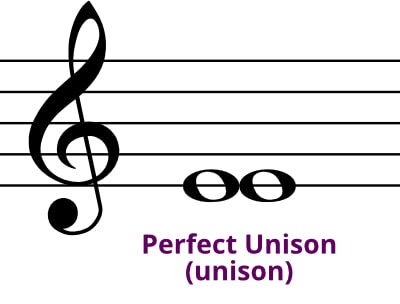
Perfect 4th
5 semitones
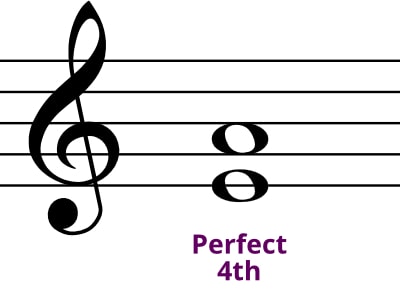
Perfect 5th
7 semitones
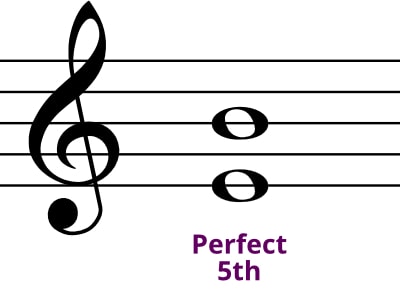
Perfect Octave
12 semitones
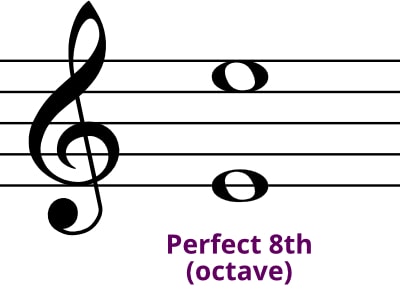
Perfect Interval shorthand: Perfect Intervals can be abbreviated as P1, P4, P5, or P8, but because these intervals are so frequently used in music, often the P is left off and they are just called a unison, 4th, 5th, or octave. Without the P, it is always assumed they are Perfect intervals unless another quality is specified.
Why are they "perfect"?
1. Perfect intervals are "perfectly consonant". Historically, perfect intervals have been considered to be the only perfectly consonant, pure, stable harmonic sounds. For this reason, many music resolutions involve a perfect interval.
2. The inversions of Perfect intervals are perfect, too. Turn a perfect interval upside down and it still retains a pure, consonant sound. All other interval qualities have the opposite sound quality when inverted: invert a major interval and it becomes minor (and vice versa); invert an augmented interval and it becomes diminished (and vice versa).

3. Perfect intervals are the same in both Major AND Natural Minor Scales. Every note in a diatonic scale is an interval above the first note of the scale. While the 3rd, 6th, and 7th notes are different in the Major vs Minor Scale, all the Perfect Intervals are the same in both scales: Perfect Unison, Perfect 4th, Perfect 5th, and Perfect 8th (Octave).
C Major Scale

C Minor Scale

Exception: The 2nd note is also the same in both Major and Natural Minor scales, but it is NOT Perfect because it doesn't share the other characteristics of Perfect Intervals. While perfect intervals sound stable and resolved, 2nds are more dissonant and usually require resolution. And while inverted perfect intervals are also perfect, inverted 2nds are the opposite sound quality (Major 2nd inverted is a Minor 7th; Minor 2nd inverted is a Major 7th).
How to Identify Interval Qualities on the Piano
If you know already know the interval number but not its quality, you can figure this out on the piano because all the keys (white and black) are exactly one semitone apart. A semitone is the distance between one piano key and the very next adjacent key (whether it is black or white).
From the starting key, count every semitone (each white or black key you pass) until you reach the other key in your interval.
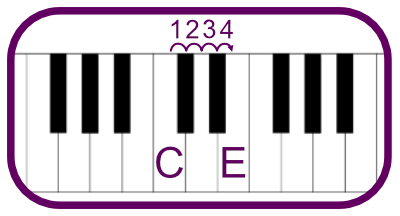
C to E is a Major 3rd because it spans 4 semitones. Start on the C key and count semitones going up: the next higher key is black (semitone 1), next is white (semitone 2), next is black (semitone 3), and the last is our ending white key E (semitone 4).
How to Transpose Any Interval to C Major on the Piano
If you don't know all your Major scales on the piano, you can transpose any interval to C to identify its quality. C Major uses only the white keys, so if you transpose your interval so that the bottom note is C, you can determine the interval's quality based on whether the higher note is sharp or flat.
To do this, count the semitones in your interval. Then count the same number of semitones up from C. If you land on a white key, most likely it's Major or Perfect, and you can use the Major scale to determine which. If you land on a black key, it's either Minor, Augmented, or Diminished, and you can reference the Major scale to determine which. (See above for more information on how to use the Major scale to identify interval qualities.)
Example: F to A is a 3rd, but what is its quality?
Count the semitones from F to A (4). Then count the same number of semitones (4) up from C key (arrive at E key). Confirm that you've transposed correctly by checking the interval count: F to A is 3 letters and C to E is 3 letters, so both are 3rds. E is a white key, so it's a Major 3rd. This means F to A is a Major 3rd.
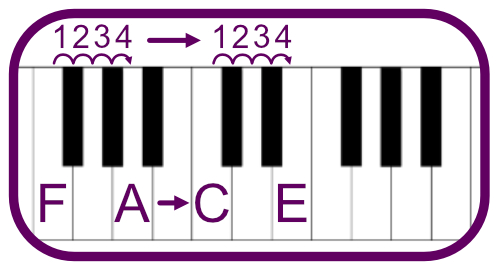
Occasionally, the higher transposed note falls on a white key, but the interval is NOT Major or Perfect (for example, if it is a d2, d3, d6, or d7). And sometimes, the higher transposed note falls on a black key, but you're not sure which enharmonic to call it (for example, is it F-sharp or G-flat?). Confirm that you've correctly named the transposed keys by checking the interval counts: your transposed interval count should be the same number as your original interval count. Otherwise, you will give your interval the wrong quality and name.
Example 1: D to F-flat is a 3rd, and 2 semitones. If you transpose the lower note to C, 2 semitones up is a white key (usually called D). But C to D is a 2nd, and your interval is a 3rd. So you must call this white key E-double flat.
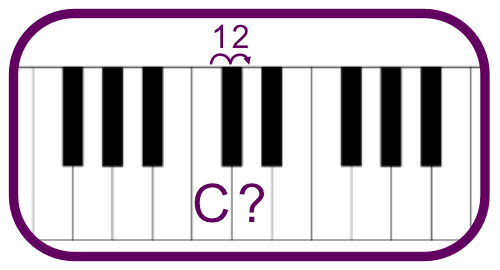
Now you can determine that the interval is a Diminished 3rd. Here is what this interval would look like on the Treble staff when incorrectly transposed and correctly transposed.
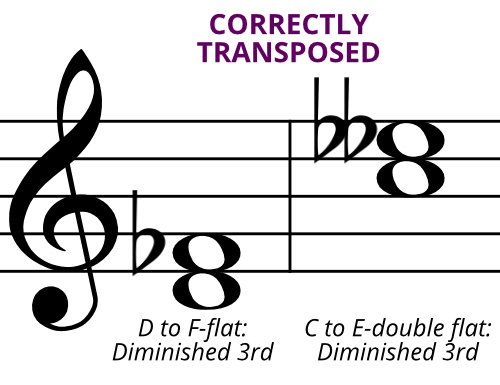
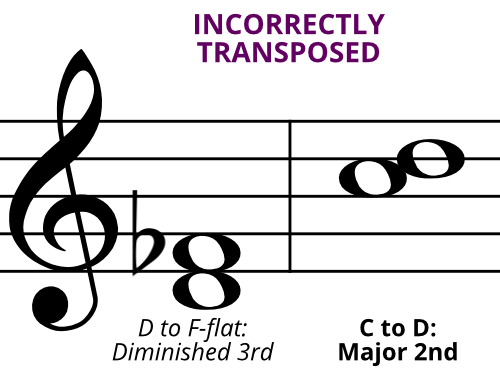
Example 2: E to C is a 6th, and 8 semitones. If you transpose the lower note to C, 8 semitones up is the black key between G and A. Should you call it G-sharp or A-flat? You must call this key A-flat because A is 6 letters above C.
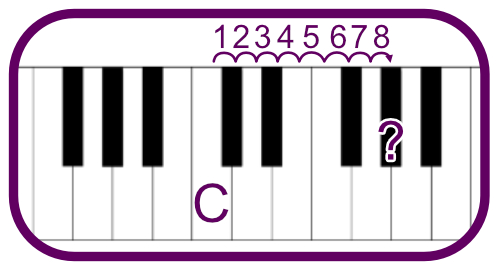
Now you can determine that the interval is a minor 6th. Here is what this interval would look like on the Treble staff when incorrectly transposed vs. correctly transposed.
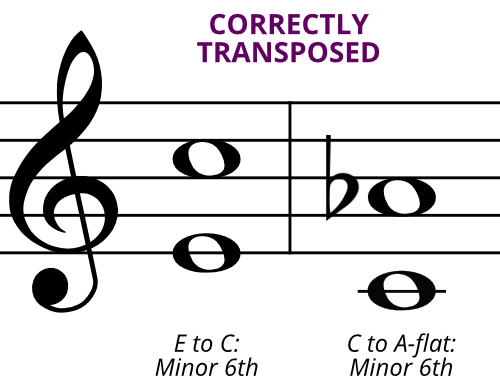
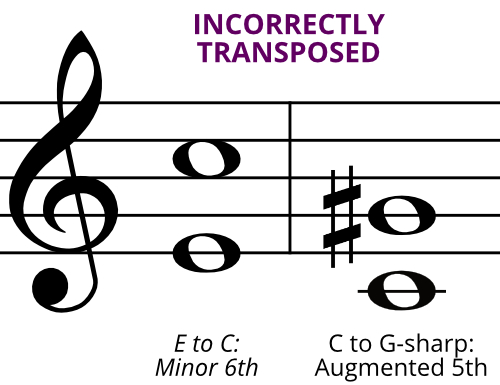
What About Intervals Larger than One Octave?
Intervals that are smaller than or equal to one octave are called simple intervals. Intervals that are larger than an octave are called compound intervals. Compound intervals can be considered a stack of simple intervals. They can be broken down into one or more octaves plus one simple interval.
For example: Here is a 10th. This is composed of an octave and a 3rd, so it can be called either a 10th or a compound 3rd.
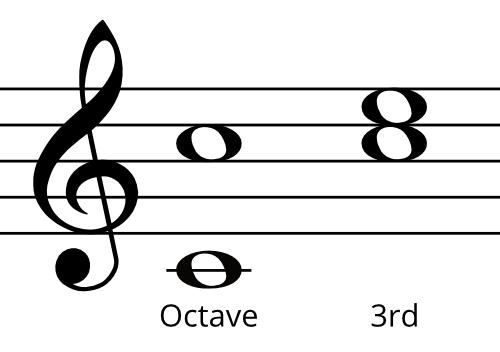
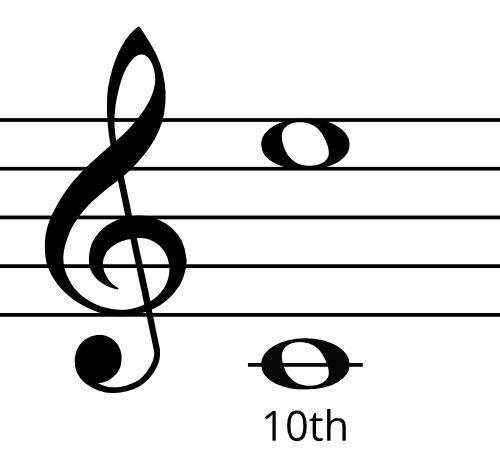
Counting staff lines reveals that this interval is a 10th. Counting letter names (C-D-E) suggests this interval is a 3rd, but because there is more than an octave difference it is clarified as a compound 3rd.
So the interval count for a compound interval can be determined two ways. One is by counting staff lines, which give you the actual number (the previous example is a 10th). The other is by counting letter names and factoring in the octave difference, which will give you its compound number (the previous example is also a compound 3rd).
The quality of a compound interval is the same as the quality of the simple interval on which it is based. In the example above, the 10th can be broken down into an octave and a Major 3rd, which makes it a compound Major 3rd or a Major 10th (either name is correct). A Major 10th will sound like a Major 3rd, but more "open"; the octave difference gives it a broader feel.

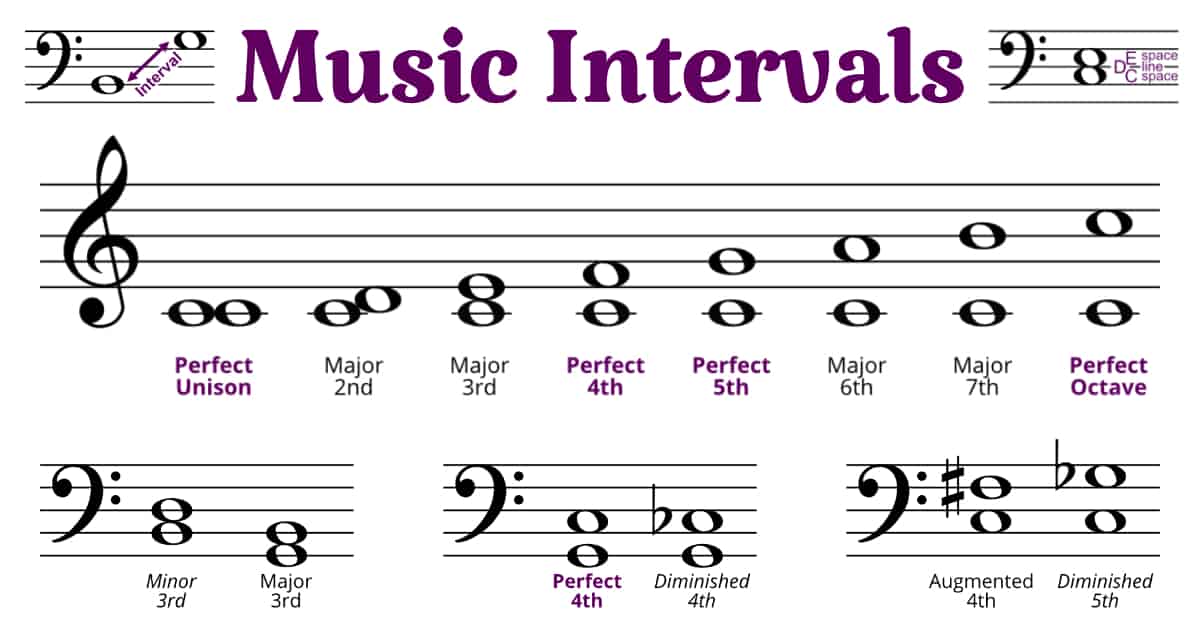
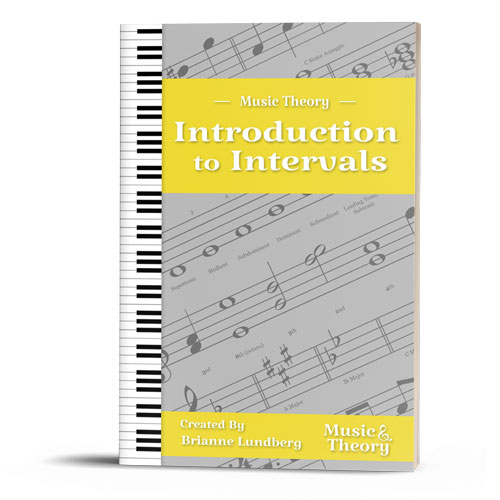

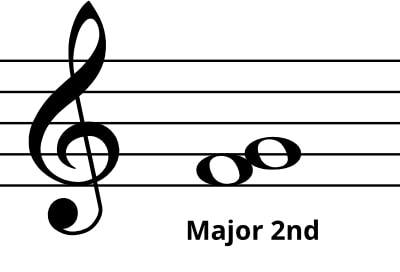
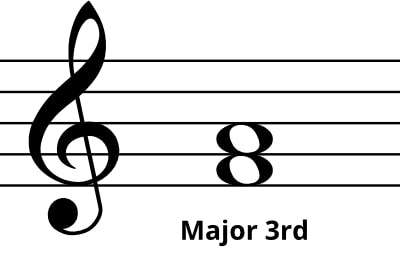
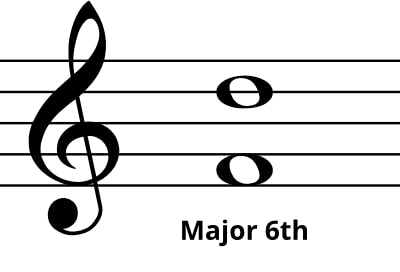
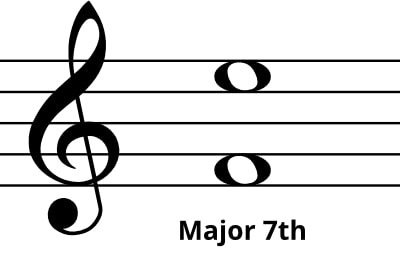
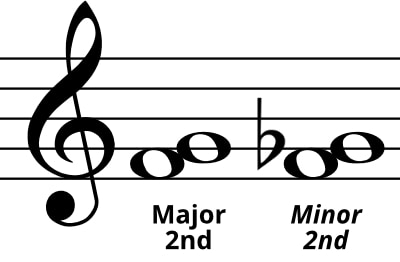
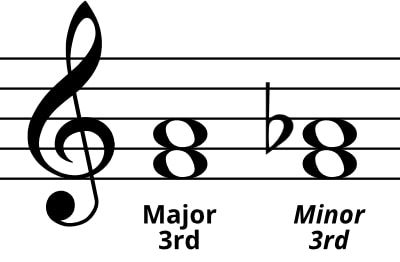
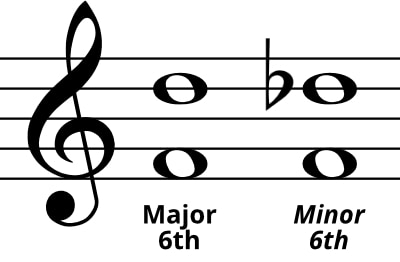
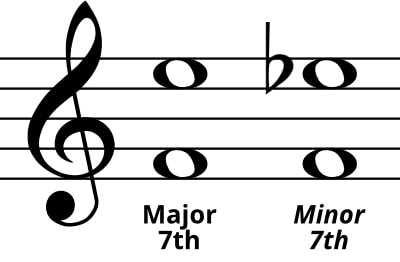


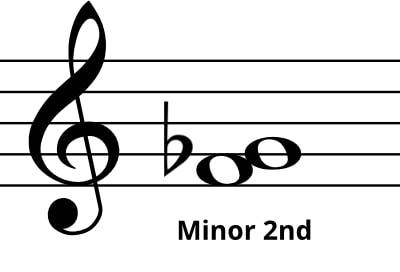
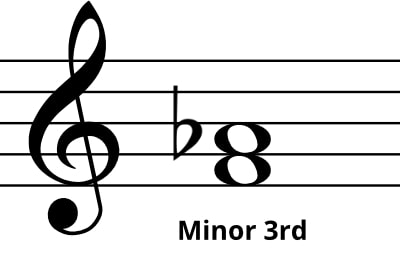
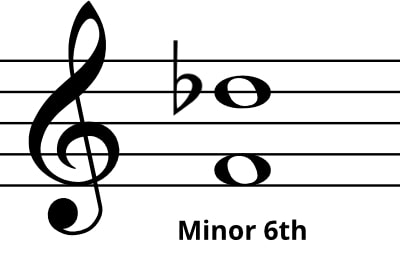
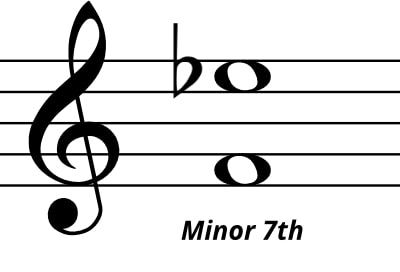


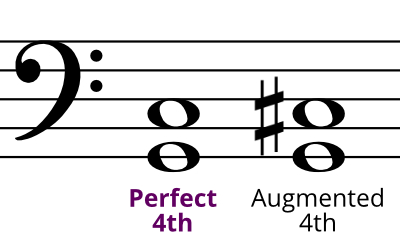
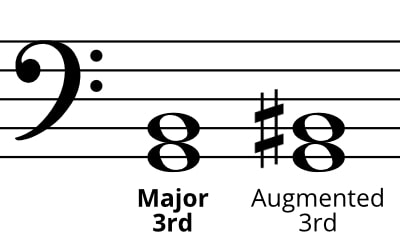
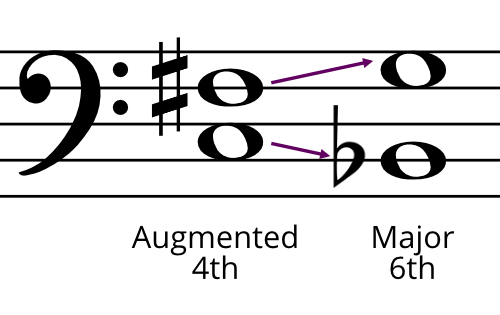
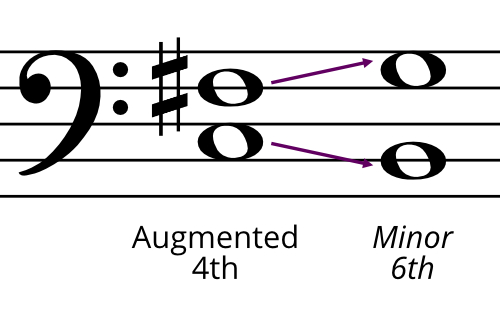


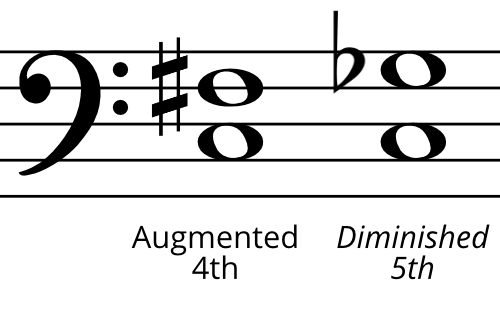

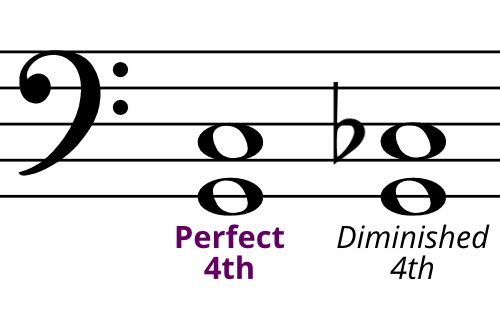
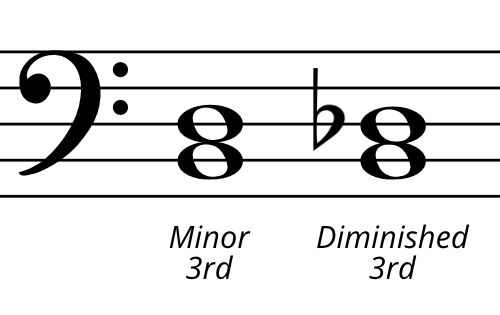
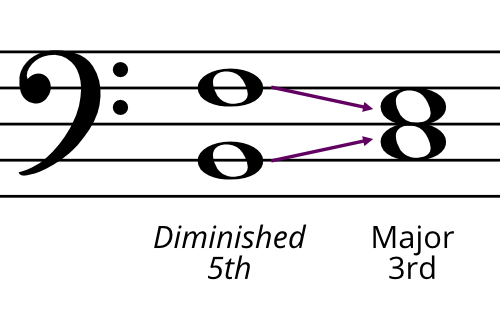

I am really happy, I have learned a lot about music intervals, I’ll be happy to receive other lessons from you.
Thanks